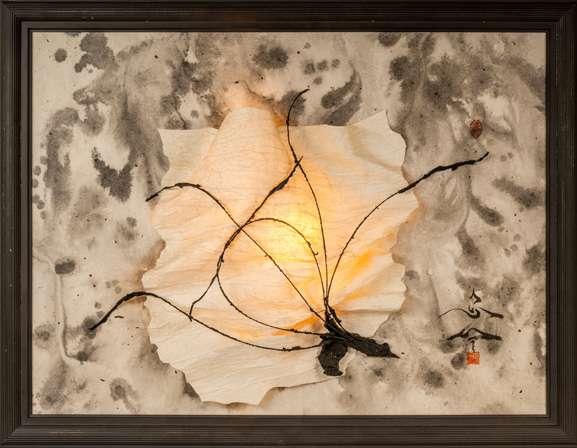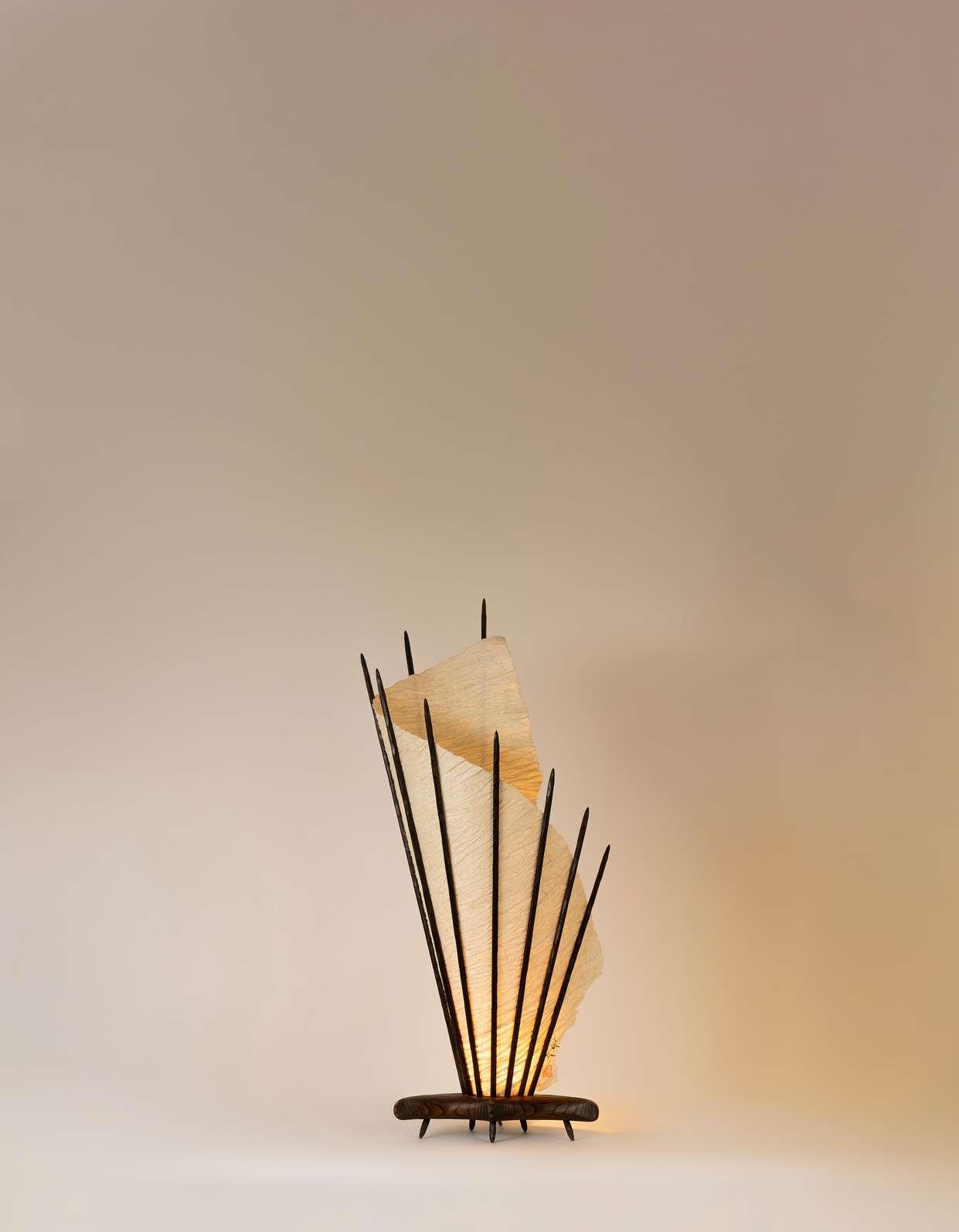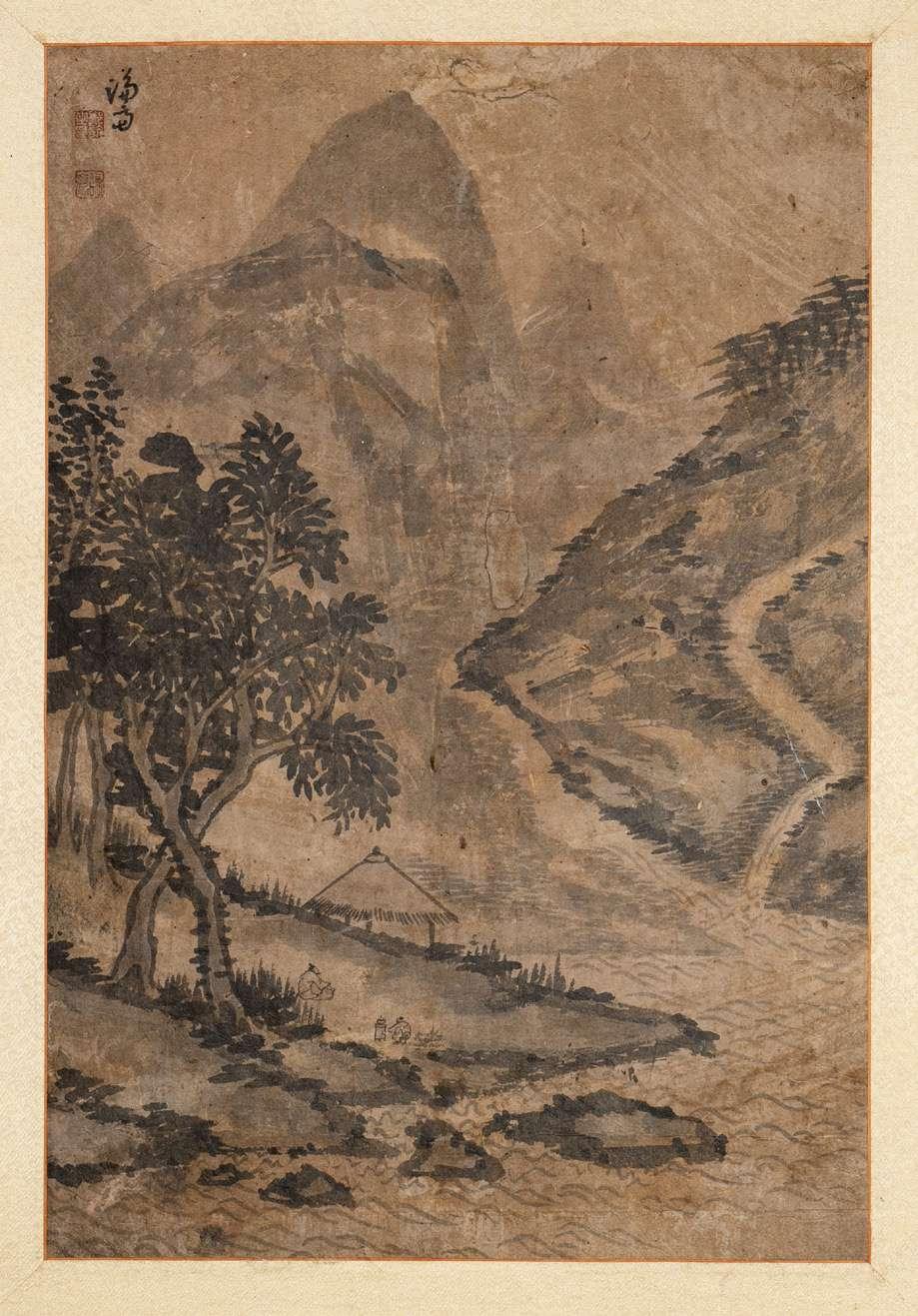
2 minute read
THE ILLUMINATED SCULPTURES OF SHOICHI AND COLLEEN SAKURAI
The son of a wood carver, Shoichi Sakurai grew up in the old downtown district of Tokyo, surrounded by traditional Japanese crafts. His passion, however, resided in the aesthetics and music of 1950s America. After many years of collecting vintage clothing and rockabilly memorabilia, Shoichi decided to turn his obsession into a business and relocated to California where he would source artworks to trade back in his homeland. Shoichi then met his wife, Colleen, an American jazz singer with a fascination for Japanese washi paper. They moved back to Japan and together, started creating unique sculptures featuring recycled and traditional Japanese materials, opening a workshop in 1995. The concept of wabi-sabi, the idea of beauty in imperfection and aged surfaces, permeates their work. Colleen and Shoichi’s creations also reflect their interest in light, warmth, and perspective.
In 2007, the De’Longhi design company in Tokyo commissioned them to create two large illuminated sculptures, and an exclusive line of jewellery featuring recycled materials made from their aluminium appliances. Today, the Sakurais are widely active in the US, Europe, and Japan.
80
SHOICHI AND COLLEEN SAKURAI HEISEI ERA, 21ST CENTURY
Two Japanese wood and rice paper illuminated sculptures entitled ‘The Bag’, both of tall form with a cord attached to the top and each raised on a pine wood stand with short legs, both with two signatures in sumi ink and with two red seals, one taller than the other, 79cm x 38cm x 120cm and 54cm x 23cm x 66cm respectively. (2)
£1,500-2,000
Exhibited: ‘Re-Birth: The Collective Works of Colleen and Soichi Sakurai’, 20th February-24th April 2009, TUV Rheinland Forum, Yokohama.
SHOICHI AND COLLEEN SAKURAI HEISEI ERA, 21ST CENTURY
A Japanese wood and rice paper illuminated sculpture entitled ‘Spirit’, featuring stylised grasses in relief on a ground with black ink mottling, signed in sumi ink and with a red stamp, the reverse also signed, sealed and inscribed, 89cm x 69cm x 16cm.

£500-800 82
SHOICHI AND COLLEEN SAKURAI HEISEI ERA, 21ST CENTURY
A Japanese wood and rice paper illuminated sculpture entitled ‘Curtain’, raised on a pine wood stand with short legs, signed in sumi ink, seal and inscribed, 33cm x 36cm x 94cm.

£800-1,200
Exhibited: ‘Re-Birth: The Collective Works of Colleen and Soichi Sakurai’, 20th February-24th April 2009, TUV Rheinland Forum, Yokohama. The Sakurais describe this piece as ‘hand-whittled wood with pine base; high and low relief created by an old technique of burning the wood and then ‘scouring’ it with an uzukuri (type of bamboo brush)’.
83
A KOREAN EIGHT-FOLD HWAJO (BIRDS AND FLOWERS) SCREEN
JOSEON DYNASTY, 19TH CENTURY
In minhwa (folk) style, each panel painted in ink and colour on paper, with stylised birds and other animals depicted in vivid colours on the buff ground, the paintings possibly mounted on a later frame, the painted panels 79cm x 26cm, the screen 148cm x 340cm overall.

£1,000-2,000
Provenance: a private British collection, acquired in Korea in the 1970s. Birds and flowers were the most common and popular subjects in minhwa paintings due to their brilliant colours. Birds are usually depicted as a male and female pair, which symbolizes conjugal harmony and a peaceful home.
84
ATTRIBUTED TO CHONG SON (1676-1759)
JOSEON DYNASTY, 17TH/18TH CENTURY
A Korean painting, ink and colour on paper, depicting an extensive mountainous river landscape, with two figures by a thatched building to the side, signed Kyomjae and with two red seals, mounted on board with a silk surround, 46.5cm x 31.5cm.
£500-1,000










